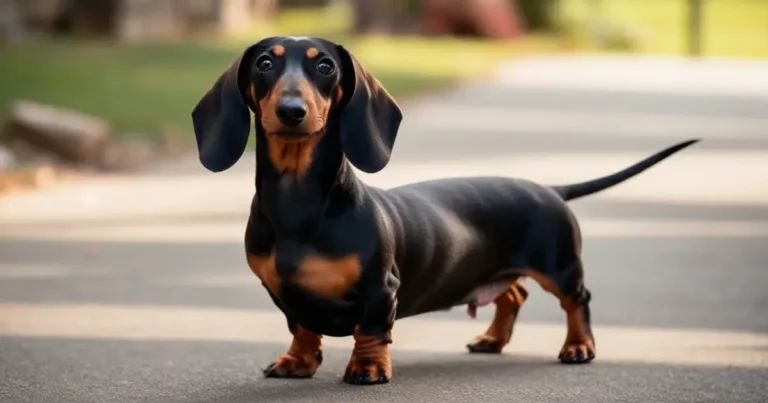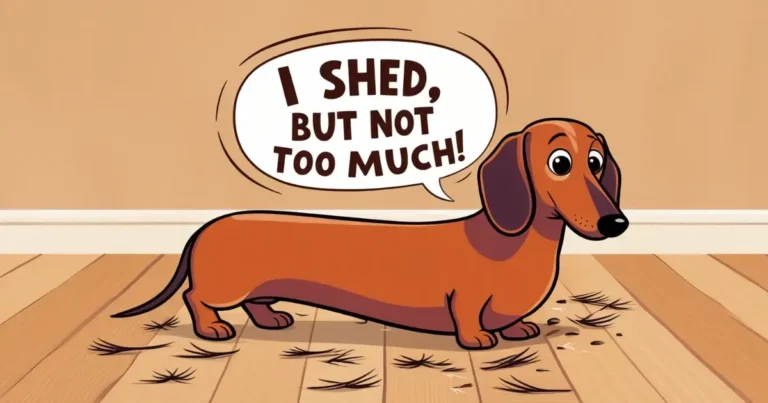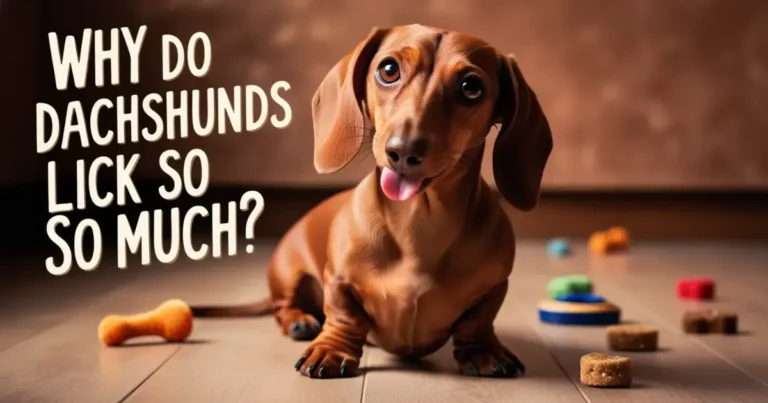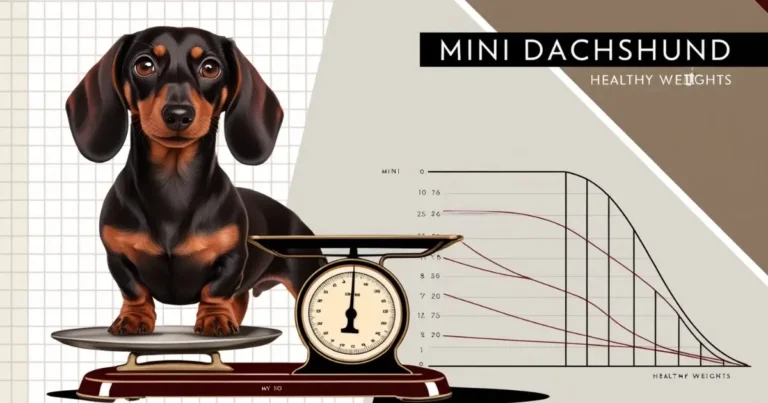How to Potty Train a Dachshund: Your Friendly Guide to Success
Potty training a dachshund might feel like a big task, but with the right steps, it’s totally possible. Dachshunds can be a bit stubborn and may take longer to learn where to go. But with consistency, patience, and a few handy tricks, you’ll get there. Let’s walk through how to potty train a dachshund step-by-step, using effective routines and rewards to help your pup succeed.
Table of Contents
Why Dachshunds Are Difficult to Potty Train
Dachshunds are adorable but famously stubborn. They have a strong personality, which can make training a challenge. And their tiny bladders mean they need to go more often, which is why accidents happen. Male dachshunds, in particular, may be more prone to marking around the house. But with consistent training, they’ll learn. If you’re wondering how long it takes to potty train a dachshund, it varies, but it could take several months of steady effort.
Creating a Potty Training Routine
A consistent routine is one of the best tools to potty train a dachshund dog. Dachshunds respond well to a schedule and need to be taken out often, especially when they’re young.
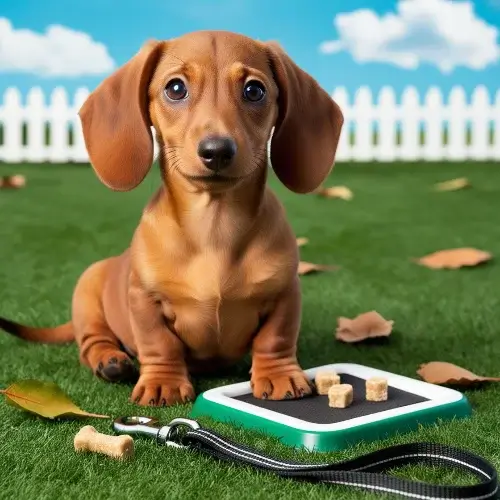
Scheduling Potty Breaks
At first, take your dachshund out every 20 to 30 minutes. As they get older, you can extend the time between breaks. Regular outdoor trips help them learn that the yard is the place to go.
Key Times for Potty Breaks
Take your dachshund outside:
- After they wake up in the morning
- After meals
- After playtime
- Before bed
These are the moments when they’re most likely to need to go. Keeping a schedule helps cut down on accidents inside.
Essential Potty Training Techniques for Dachshunds
Training techniques that are simple and consistent work best for dachshunds.
Using a Specific Cue Word
Choose a word like “go potty” to say each time you take your dachshund outside. Over time, they’ll start to understand that this means it’s time to go.
Rewarding Outdoor Success
As soon as your dachshund goes outside, give them a treat, pet them, or say “good dog!” They learn quickly with rewards, and it builds positive habits.
The Role of Crates in Potty Training
Using a crate is very helpful when figuring out how to potty train a dachshund. A crate can prevent accidents when you can’t watch your pup closely.
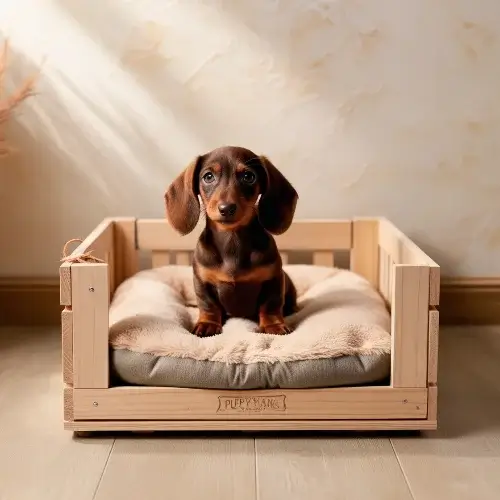
Using the Crate to Encourage Outside Pottying
When you’re busy or can’t keep an eye on your dachshund, keeping them in a crate reduces the chance of accidents. Take them outside right after crate time so they learn that going outdoors is the next step.
Ensuring the Crate Remains a Positive Space
Make sure your dachshund likes their crate. It should feel safe and cozy, never like a punishment. If they see the crate as a comfortable spot, they’ll relax there without feeling trapped.
Understanding Potty Training Cues
Noticing when your dachshund needs to go can help you get them outside on time. Recognizing these signs is important for potty train a dachshund dog.
Common Potty Signals
Some cues that your dachshund might need to go include:
- Sniffing the ground
- Circling
- Losing interest in what they’re doing
Responding Quickly to Cues
When you spot these signals, take your dachshund outside immediately. The faster you respond, the faster they’ll understand that outside is the place to go.
Establishing Effective Praise and Rewards
Praising your dachshund helps reinforce positive behavior. They love attention, so this works wonders!
Praise Techniques
Saying things like “good boy” or “good girl” right after they go outside lets them know they did the right thing. Use a cheerful tone to show your excitement.
Treats for Positive Reinforcement
Treats can also be a great motivator. Dachshunds often love food rewards, so giving them a small treat after a successful outdoor potty break makes them want to do it again.
Challenges in Potty Training Dachshunds
Sometimes, potty training a dachshund isn’t easy. They can be stubborn, and you might face a few challenges.
Stubbornness and Delayed Progress
Some dachshunds take longer to train than others. Be patient. It may take months, but eventually, your hard work will pay off.
Difficulty with Weather Conditions
Dachshunds aren’t big fans of rain or cold, which can make them hesitate to go outside. Getting them a small coat or taking an umbrella can help them feel more comfortable in the rain.
Should You Use Puppy Pads? Pros and Cons
Some people consider using puppy pads as part of potty train a dachshund, but they have their pros and cons.
Pros of Using Puppy Pads
Puppy pads are handy if your dachshund is left alone for long periods. They offer a place for accidents, saving your floors and carpets.
Cons of Using Puppy Pads
However, pads can sometimes confuse dachshunds, making them think indoor surfaces are acceptable potty spots. Some owners skip pads altogether for this reason.
Managing Potty Training Accidents Indoors
Accidents will happen. Handling them calmly and effectively helps your dachshund learn faster.
Immediate Cleaning Tips
Use an enzyme cleaner to remove any lingering smell. If your dachshund smells an old accident, they might go in that spot again.
Reducing Repeated Indoor Accidents
Keeping a close eye on your dachshund and cleaning up thoroughly will reduce repeat accidents. Avoid yelling, as this can make them anxious about going potty at all.
Training Your Dachshund to Signal When They Need to Go Out
Teaching your dachshund to alert you when they need to go outside can make potty training even easier.
Using a Bell for Potty Training
Hang a bell by the door and show your dachshund how to ring it each time you take them out. Soon, they’ll learn to ring it when they need to go.
Teaching Bark or “Speak” as a Signal
Alternatively, you can teach them to bark when they need to go. This can be helpful if they’re in another room and you can’t see them.
Maintaining Consistency for Long-Term Success
Consistency is the key to success to potty train a dachshund. Stick to a routine, keep rewarding them, and be patient. With time, they’ll become fully potty trained.
Conclusion
Potty training a dachshund takes patience, but with a steady routine, rewards, and positive praise, you’ll see progress. Every little success gets you closer to a fully trained pup! Stay consistent, and soon, your dachshund will know exactly where to go.
FAQs
What’s the best age to start potty training a dachshund?
The best age to start potty training a dachshund is as soon as you bring them home, typically at 8-12 weeks. Early training helps establish positive habits and makes future training easier.
Can I use puppy pads to potty train my dachshund?
Yes, but use them selectively. Puppy pads can be helpful, especially if you’re away for longer periods. However, they may confuse dachshunds into thinking indoor areas are acceptable potty spots, so limit their use if possible.
Why are dachshunds difficult to potty train compared to other dogs?
Dachshunds are independent and stubborn by nature, which can make potty training more challenging. Their small size also means they have tiny bladders and need frequent breaks, adding to the difficulty.
How can I get my dachshund to signal when they need to go outside?
You can teach your dachshund to signal by using a bell by the door or teaching them a “speak” command. Each time you go outside, encourage them to ring the bell or bark, and reward them afterward.



